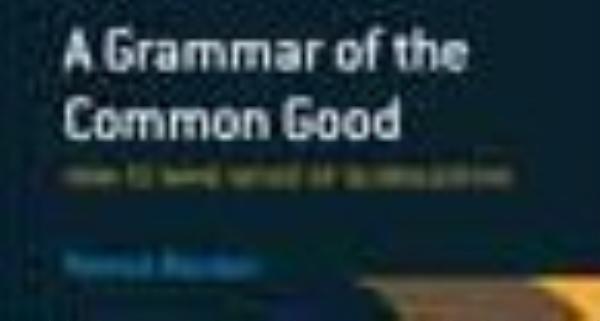The recent House of Commons debate on Human Embryo Research and Abortion brought to mind Bob Dylan’s anti-war song With God on our Side. In all of the conflicts that he refers to, all of the protagonists claimed that God was “on their side”, and he adds, provocatively: ”But I can’t think for you, you’ll have to decide whether Judas Iscariot had God on his side”. Similarly confused claims were made during the Commons debate with appeals to “the common good” in conflicting and diametrically opposing contributions to the debate. Surely they couldn’t all claim to be speaking on behalf of the “common good” without either trying to claim the term to bulwark their side of the argument, or collectively doing fatal damage to the concept of “the common good”? Apparently, “the common good” was not shared or accepted mutually recognised common ground. Vague appeals to “the common good” only concede more space to those who argue that there is no such thing on earth.
At the annual conference of the National Justice and Peace Network in Swanwick this July, Dr Pat Riordan, Associate Director of the Heythrop Institute for Religion, Ethics and Public Life, pointed to “market fundamentalism” as the cause of much suffering in the world today. He reminded delegates, in a remark that is highly relevant today, that; “Pope John Paul II condemns capitalism when the markets are not regulated intelligently”. So much for the bankers and speculators. Dr Riordan’s latest work, A Grammar of the Common Good (subtitled “Speaking of Globalisation”) is a brilliantly-thought-through attempt to redeem the concept of “the common good” in order to build up some shared intellectual and moral resources to enable us to deal with the challenges of “a shared environment which is threatened by global warming, a global economic order in the absence of significant global governance, international institutions which lack independence from the member states which comprise them and the ever real possibility of violence whether using a car or phone bomb or nuclear weapons in the name of whatever cause.” (p1) Noting a revived interest in the topic of “the common good”, Dr Riordan examines how it could be usefully employed in the context of a globalised twenty-first century world.
The book’s title is taken from Cardinal Newman’s Grammar of Assent, as Dr Riordan is anxious to emphasise the effective use of the term “common good”. He is immediately inviting us to get into the deeper structures of meaning that could be associated with using the term.
Of course, paying close attention to what words mean is more important than ever in our so-called ‘ironic’ rhetorical age, in which the art of using language to persuade or influence predominates. In the nineteenth century Archbishop Chenevix Trench reminded us (in his article ‘On Morality in Words’) that the meanings of words matter. “How deep an insight into the failings of the human heart lies at the root of many words; and if only we would attend to them, what valuable warnings many contain against subtle temptations and sins”. But simply checking the vocabulary or dictionary definition of “good” or “common” takes us no further forward. Nor does the sentence patterning of the syntax word order. As words are not like weights or measures or coins, it is not a question of ‘fixing’ the meaning of a contentious word but treating pieces of language as human behaviour, and consequently susceptible to the vagaries of the human condition. Grammar, therefore, is about right relations and developing proper connections, ensuring that the basic ground rules of inflections and nuances of time, manner and mood are properly respected. Grammatical rules are therefore fundamental principles of getting relationships right. As the linguist David Crystal puts it, “grammar is after all, the basis of the way in which we organise our utterances so that they make sense, through processes of sentence construction.”
Working then to establish “the grammar of the common good” is both a philosophical and moral task that Dr Riordan addresses with great subtlety, respect and care. By calling up the uses of “the common good” in political and economic thought (from classic and medieval times to the present) and in Catholic Social Teaching, he constructs a framework in which “the common good” can be called up as a critical moral term. Of course, as a philosopher, he carefully navigates us through the major contributors to “common good” discourse, ancient and modern – Aristotle, Aquinas, Rawls, MacIntyre, Mary Glendon, Habgood, Amartya Sen and David Held – and takes on the particular case challenges of the Enron scandal and the new “securitization” issue of the current banking crisis. Liberalism and communitarianism get close critical treatment, reminding us throughout that the criteria for “common good” in political constitutions cannot be restricted to either ‘making money’ or ‘providing security’. A Grammar of the Common Good is not designed for skim reading or reductivist summarising. It is characterised by an ability to tease out complex arguments and positions and carefully laying out the unpicked bundles. As with the best philosophers his worked examples – “Martin and Mary in the sandpit,” “Jack and Jill in the Stock Exchange”, conversations between George (Bush) and Tony, and references to “Arabs buying football clubs” – are simply unforgettable as he takes us through the thickets of current moral philosophies.
The problem is that “in the absence of agreement on what our common humanity entails the argumentative use of the common good is not likely to generate agreement”, but the language of the common good (in context) can “preserve the hope of a negotiated settlement” and “it does this by recalling the shared humanity of those who are in conflict and who share a common good because of that shared humanity” (p58). As he moves into the grounds of international agreements, Dr Riordan draws on the complexity of meaning and the analogical use of the term “common good”, emphasising that it is “heuristic” i.e. “It names something which is not yet known, and so it is appropriate to speak of a search. At the same time something is known about it such that false candidates or claims can be excluded. The search is not directionless.... Integral human fulfilment is the common good of humanity and while it may not be easy to say exactly what it entails, it is possible to specify when the conditions for human fulfilment are deficient or lacking. Commitment to the common good in producing these conditions is solidarity.” (p110)
The purpose of the “guide map”, which suggests how the book can be used the context of globalisation, is to urge us to action. We need to be clear what we are talking about but “intellectual housekeeping” must strengthen our commitment to acting upon our understanding in order to improve our relations on our globe. In conclusion, Dr Riordan suggests that “Catholic social teaching is as much Catholic learning as the Christian community struggles along with fellow humanity to understand what is going forward and to discern what it ought to do” (p149)
As we look forward to the forthcoming Papal Encyclical on social justice, Dr Pat Riordan’s A Grammar of the Common Good is essential background reading for us all in the Church. At the very least order it at your local library now and we may find that our Church’s social teaching could help lead a much-needed deeper debate on the current crises of globalisation, locally and internationally.
The reviewer, John Battle, is the Labour Member of Parliament for Leeds West.
![]() Find this book on Continuum's web site
Find this book on Continuum's web site






